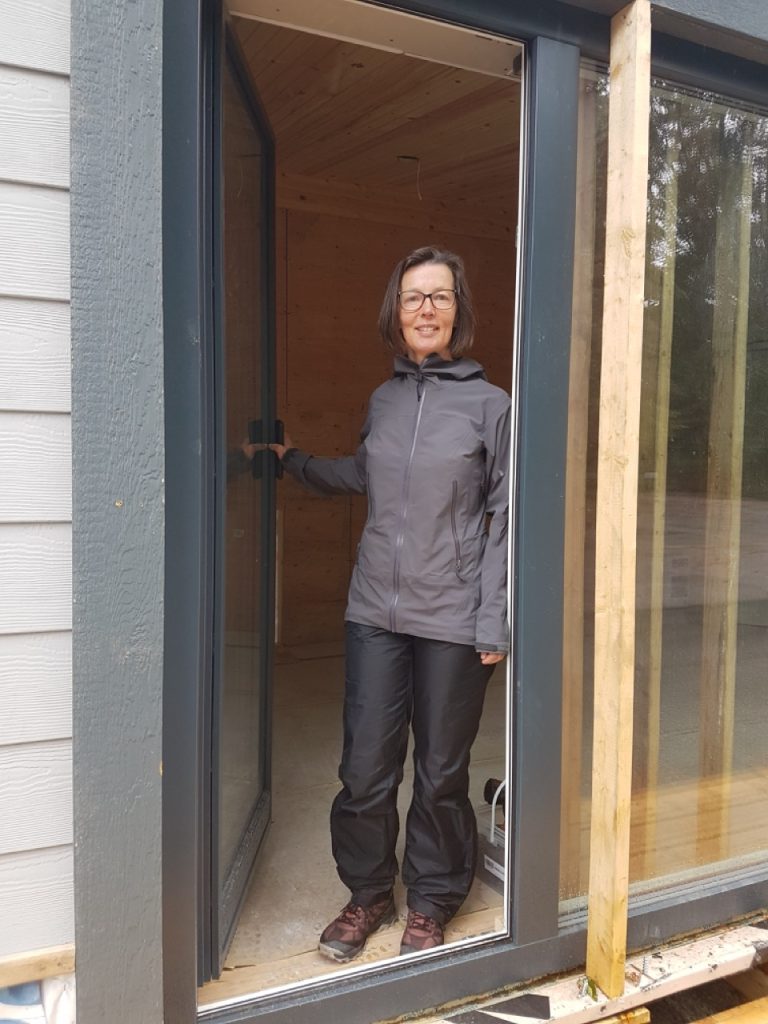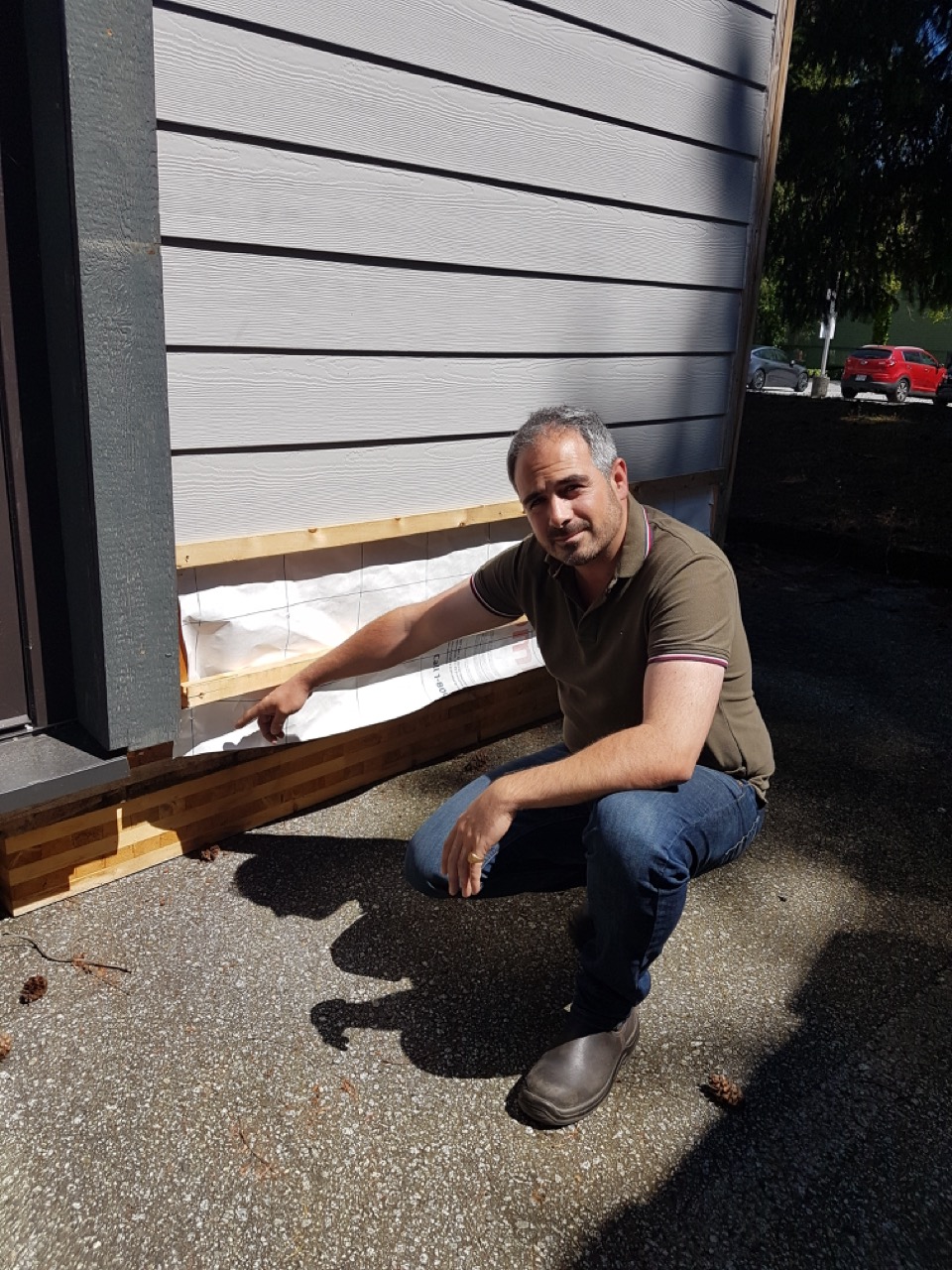Imagine that you live in a community in B.C. that is not on the grid—no hydro, no natural gas. Imagine you live in a home where heat and light are supplied by diesel and propane that take two hours to be delivered by truck over a forest service road.
Imagine that, in seeking an alternative source for heat and light for the homes in your community, you contact FP Innovations, a non-profit research organization with a lab on the UBC campus.
You choose FP Innovations because your community of Kluskus is the home of the Lhoosk’uz Dene Nation, one of 75 Indigenous communities in B.C. that have turned to the organization’s Indigenous Forestry Sector Technical Support Program. Christoph Schilling, the program lead, says its role is to support Indigenous forest dwellers and the Canadian forestry sector.
In a parking lot at 2665 East Mall, the company has completed two parts of a prototype modular home. On delivery this summer to the Kluskus community, located 200 km west of Quesnel, the two halves will be joined together.
Heat and light for the modular home will come from two major sources: a community-based heat and power project that FP Innovations says will be completed later this year, plus carbon-based insulation in the walls.
The community-based heat and power plant will generate electricity and provide hot water heating. Dene Chief Liliane Squinas says the territory was heavily affected by a pine beetle outbreak and the chipped and dried pine waste will be the fuel producing power for the community, replacing diesel generators.

(Photo: Warren McKinnon)
“We will be creating a green power supply while removing the biomass fire hazard surrounding our community,” the chief said.
The home’s exterior walls are designed to reduce energy use through what Schilling calls “passive energy.” A space within the walls, 30 cm wide, is filled with compressed sawdust and cellulose. The house retains heat and requires almost no other heating other than the sun itself. That can be augmented by baseboard heaters powered by a solar panel or the community biomass system. The insulation is so effective, says Anje Wahl, the FP Innovations senior researcher, that only baseboard heaters would be needed in extremely cold weather.
The biomass energy system was developed in Finland. Another import, Wahl says, comes from Switzerland and involves the use of mass timber where lumber is “cross laminated” for strength. Stability and strength are gained when each layer is set perpendicular to the previous layer. A panel has multiple layers according to the Canadian Wood Council. Mass timber was also used extensively in the building of UBC’s eighteen-storey Brock Commons Tallwood House student residence on Walter Gage Road.
Drawing on this innovation, one of the most distinctive aspects of the 75 sq. m modular home is that its foundation is made of timber rather than concrete. Wahl estimates that 16 tons of carbon emissions were avoided using mass timber for the house rather than concrete. Construction time is also reduced.
The foundation consists of four layers of cross-laminated timber. It rests on a water-repellant foam next to the ground. A sensor membrane is installed between the foam and the wood foundation to monitor temperature and moisture.
The commercial cost of the home is $300,000. The Lhoosk’uz Dene Nation paid $150,000 with additional funding from the federal government’s economic development agency for British Columbia, and the B.C. government’s Northern Development Initiative Trust.
WARREN MCKINNON IS A LONGTIME CAMPUS RESIDENT.
